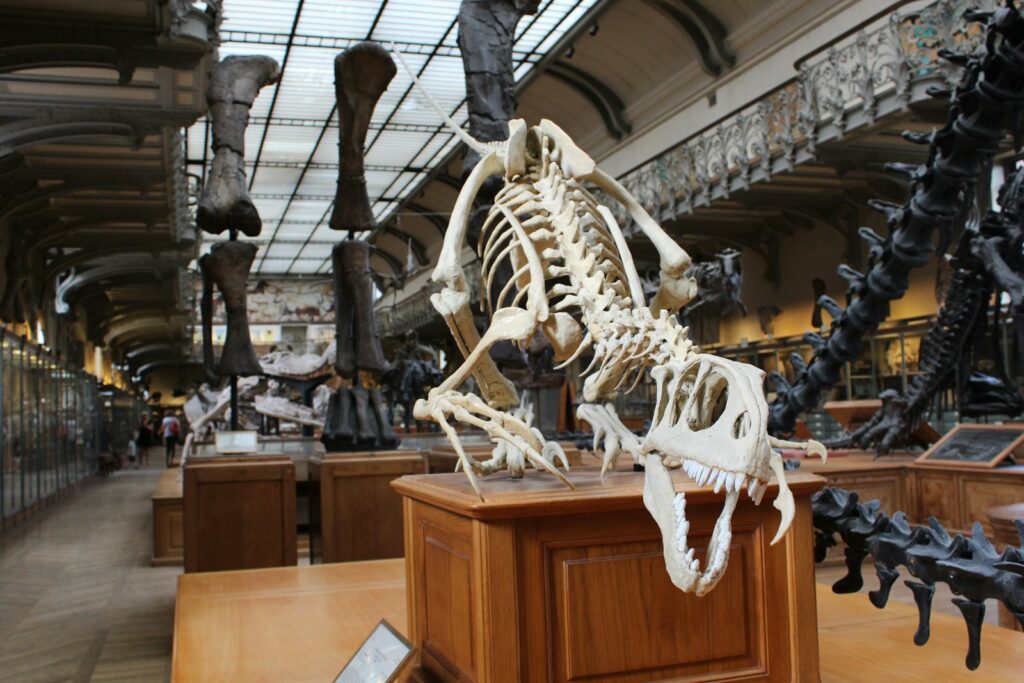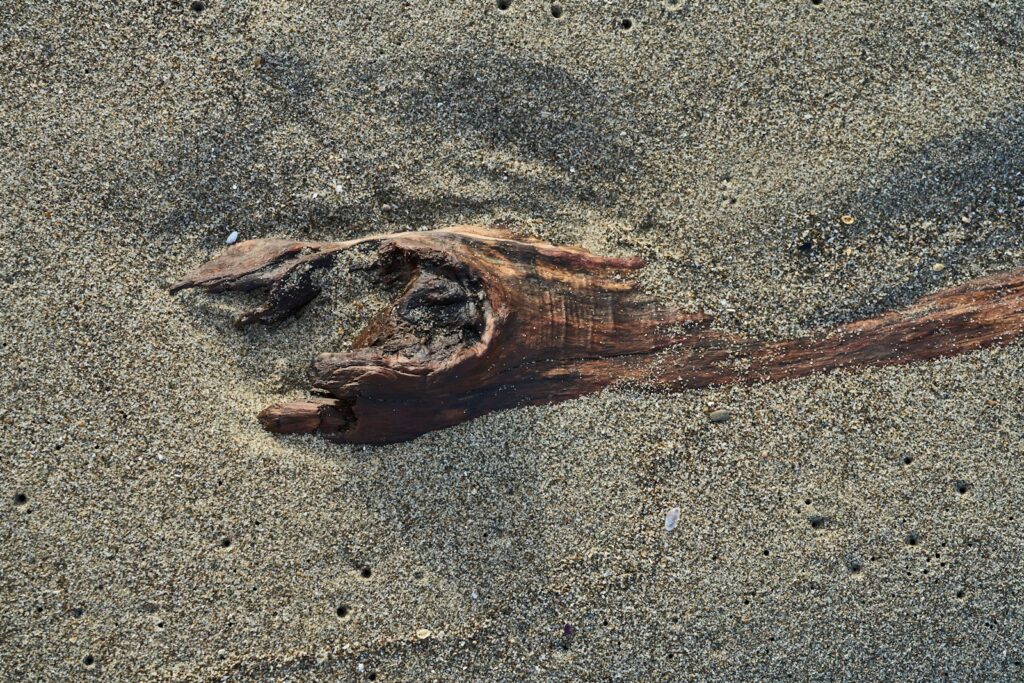The magnificent dinosaur exhibits that captivate visitors in museums worldwide represent the culmination of a remarkable scientific process that often spans years, sometimes decades. Each fossil on display has undergone an extraordinary journey—from its formation millions of years ago to its discovery, preparation, and final mounting in a museum hall. This transformation from buried bone to educational centerpiece involves numerous specialized professionals, cutting-edge technology, and painstaking attention to detail. The process illuminates not just prehistoric life but also showcases the intersection of science, art, and public education that defines modern paleontology. Let’s explore the fascinating journey that dinosaur fossils take from their initial burial to their eventual place of honor in museum exhibitions around the world.
The Process of Fossilization
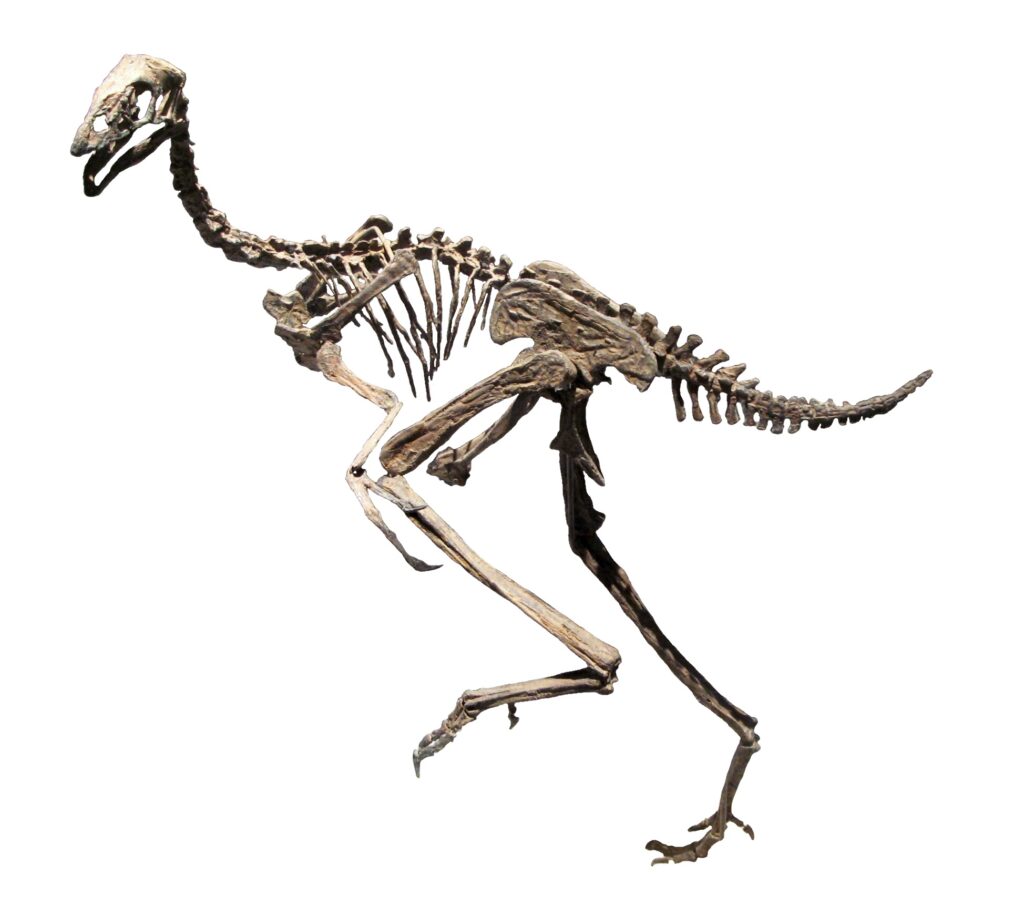
The journey begins immediately after a dinosaur’s death, when the complicated process of fossilization starts. For fossilization to occur, the animal must typically be buried quickly in sediment that shields it from scavengers and environmental degradation. Over millions of years, groundwater containing dissolved minerals seeps through the bones, gradually replacing the original organic material with minerals like silica, pyrite, or various forms of calcium—a process called permineralization. In rare cases, soft tissues can be preserved through rapid mineralization or special environmental conditions that inhibit decay. Unlike popular belief, fossils aren’t simply “old bones” but are stone replicas where every microscopic detail of the original bone structure has been preserved through mineral replacement. Without this natural preservation process, which affects less than one percent of all creatures that have ever lived, we would have virtually no physical record of dinosaurs.
Finding Fossil Sites
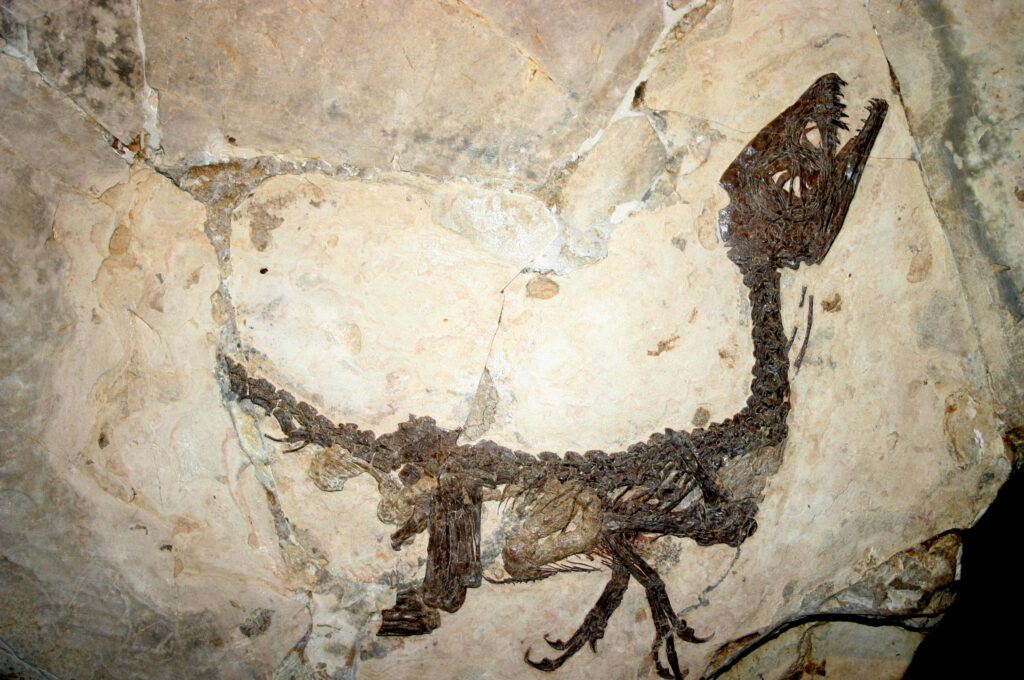
Discovering dinosaur fossils requires both scientific knowledge and a fair amount of luck. Paleontologists identify potential fossil sites by locating exposed sedimentary rock of the appropriate age, typically from the Mesozoic Era spanning 252 to 66 million years ago. They look for specific formations known to yield fossils, often in locations where erosion has exposed rocks from the right period. Modern fossil hunting combines traditional field surveying with advanced techniques like satellite imaging, geographical information systems (GIS), and even AI models that predict likely fossil beds based on geological data. Many significant discoveries still happen through chance encounters—a hiker noticing an unusual shape protruding from a cliff face, or a rancher stumbling across bones on their property. Certain regions like the Morrison Formation in the western United States, the Gobi Desert in Mongolia, and Alberta’s Dinosaur Provincial Park have proven especially rich in dinosaur remains, making them hotspots for paleontological expeditions.
The Excavation Process

Excavating a dinosaur fossil requires meticulous care and specialized techniques to prevent damage to the precious scientific evidence. Once a fossil is located, paleontologists carefully remove the surrounding rock using increasingly delicate tools as they get closer to the bone, starting with picks and shovels for the overburden, then switching to dental picks, brushes, and even air scribes for the fine work. The team creates detailed maps and photographs documenting the exact position of each bone, which provides crucial information about the animal’s death and burial. Large fossils are typically encased in protective jackets made of burlap strips soaked in plaster of Paris, creating a hard shell that protects the specimen during transport. This jacketing process hasn’t changed significantly in over a century, though modern excavations might use specialized foams and consolidants to provide additional protection. Particularly fragile specimens might require the removal of large blocks of surrounding matrix to be prepared later in laboratory conditions.
Field Documentation and Data Collection

Before any fossil is removed from its discovery site, extensive documentation creates a permanent record of its original context. Paleontologists use mapping techniques to record the precise location and orientation of each bone, which helps determine if the skeleton is articulated (bones in life position) or if it was scattered by scavengers or water currents before burial. Digital technologies have revolutionized this process, with teams now employing photogrammetry, 3D scanning, and drone photography to create detailed digital models of excavation sites. Scientists collect associated data, including sediment samples for microfossil analysis, pollen samples for paleoenvironmental reconstruction, and geological information that helps date the specimen. This contextual information is crucial for understanding not just the individual organism but also its ecosystem and the broader environmental conditions of its time. Some expeditions even conduct preliminary CT scanning in the field using portable equipment to assess the internal structure of particularly valuable specimens before transport.
Transportation to the Laboratory
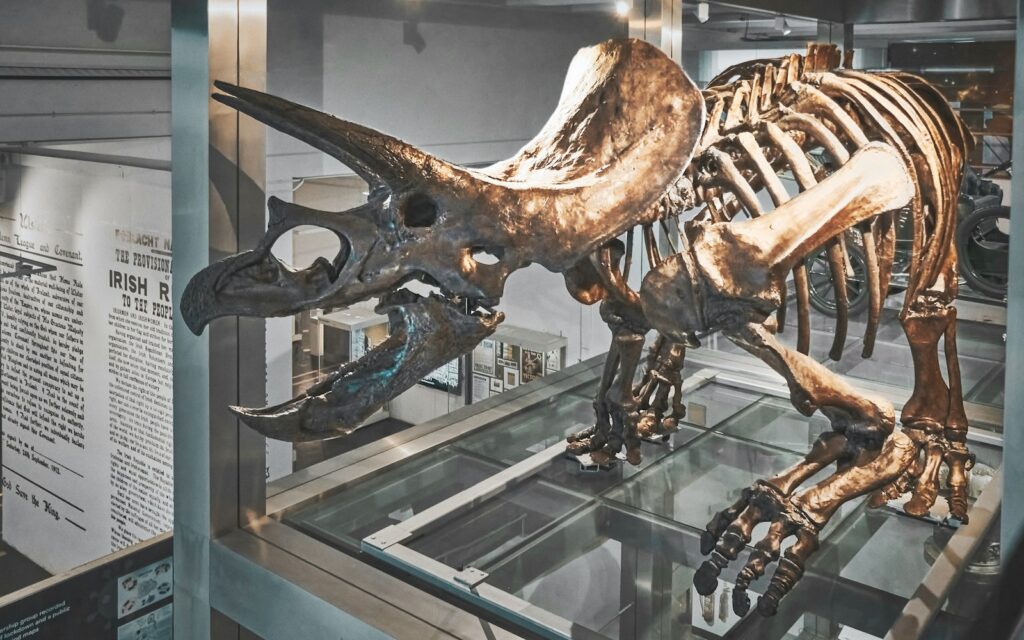
Moving dinosaur fossils from remote field locations to preparation laboratories presents significant logistical challenges. Jacketed specimens can weigh hundreds or even thousands of pounds, requiring specialized transportation equipment. In remote locations, teams might use helicopters, pack animals, or custom-built sleds to move fossils to the nearest accessible road. For international expeditions, complex permit processes and customs regulations must be navigated before specimens can cross borders, with documentation ensuring the fossils will be properly studied and eventually returned to their country of origin if required by law. The transportation phase carries some of the highest risks in the entire process, as vibrations, temperature changes, and physical impacts can damage delicate specimens. Special shock-absorbing crates, temperature-controlled containers, and custom-designed foam supports are often employed for particularly valuable or fragile specimens. For extremely large dinosaurs like titanosaurs or complete tyrannosaurs, the logistics can rival those of moving industrial equipment, sometimes necessitating specialized vehicles, cranes, and transportation permits.
Laboratory Preparation

Once safely delivered to the laboratory, the fossil undergoes the painstaking process of preparation, where technicians meticulously remove the surrounding rock matrix to expose the bone. This delicate work can take months or even years for complex specimens, with preparators using tools ranging from dental picks and pneumatic engravers to microscopes and chemical treatments. The goal is to reveal the fossil while preserving all scientific information, including fine surface details that might provide clues about soft tissues, skin impressions, or evidence of disease. Modern preparation labs employ technologies like micro-CT scanning that allow preparators to “see” inside the rock before removing it, helping them avoid damaging hidden elements of the fossil. Consolidants and adhesives are carefully selected and documented, as they become part of the permanent specimen and must not interfere with future scientific analysis. Particularly important specimens might undergo preparation under microscopes, with technicians working a few square millimeters at a time to ensure no detail is lost, especially when dealing with delicate structures like skull elements or tiny juvenile specimens.
Scientific Analysis and Research

With preparation complete, the fossil undergoes comprehensive scientific analysis to determine its taxonomic identity and significance. Researchers meticulously measure and photograph each bone, comparing it with known specimens to determine if it represents a new species or provides new information about an existing one. Advanced analytical techniques such as synchrotron radiation scanning, isotope analysis, and microscopic examination of bone histology (internal structure) can reveal details about the dinosaur’s growth, diet, and health. DNA analysis, while extraordinarily rare in dinosaur specimens, has occasionally yielded fragments of genetic material from exceptionally well-preserved fossils. Scientists also conduct comparative anatomical studies to understand the creature’s locomotion, feeding mechanics, and evolutionary relationships with other species. This research phase typically culminates in peer-reviewed publications that formally document the specimen and its scientific importance, making the findings available to the international scientific community and establishing the fossil’s place in our understanding of prehistoric life.
Creating Replicas and Casts

Many museums display replicas rather than original fossils, which allows the actual specimens to remain safely in collections for research while enabling multiple institutions to showcase the same significant discoveries. Creating these replicas begins with making molds of the original bones using silicone rubber or other flexible materials that capture every minute detail of the fossil’s surface. From these molds, casts are produced using materials such as fiberglass, polyurethane resin, or epoxy that can be colored and textured to precisely match the appearance of the original fossil. Advanced 3D scanning and printing technologies have revolutionized this process, allowing for exact digital models that can be scaled, manipulated for study, or printed as physical reproductions without ever touching the fragile original specimen. These technologies have democratized access to rare fossils, enabling researchers and students worldwide to study accurate replicas of specimens they might never see in person. For museum displays, fossil replicas offer additional advantages—they’re lighter (facilitating more dynamic mounting), can be modified to complete missing elements based on scientific inference, and can withstand the lighting and environmental conditions of public exhibition that might damage original specimens.
Mounting for Museum Display

Creating a museum-quality dinosaur mount combines scientific accuracy with artistic vision to bring extinct creatures back to life in three dimensions. Modern mounts typically use lightweight metal armatures custom-designed to support each bone without damaging it, with the internal framework concealed within or behind the skeleton. Mounting specialists must consider scientific accuracy, stability, visual appeal, and visitor safety when designing these displays. The posture chosen for the mounted skeleton reflects the latest scientific understanding of how the animal moved and held itself in life, which can change as research advances. For this reason, many modern mounts are designed to be modifiable as new evidence emerges about dinosaur posture and locomotion. Creating dynamic poses—such as predator-prey interactions or family groups—requires close collaboration between paleontologists and exhibit designers to ensure the display is both scientifically defensible and visually compelling. The final positioning of each bone requires extensive knowledge of comparative anatomy to correctly articulate joints and account for cartilage that would have been present in the living animal but hasn’t fossilized.
Museum Conservation and Preservation

Once on display, dinosaur fossils require ongoing conservation to protect them from environmental threats and structural stress. Museum conservators monitor temperature, humidity, light levels, vibration, and air quality around fossil exhibits, adjusting conditions to minimize deterioration. Fossils on display are typically treated with specialized consolidants that strengthen the mineralized bone without altering its scientific value or visual appearance. Many large mounted skeletons include internal monitoring systems that track stress on vulnerable points, allowing conservators to address potential structural issues before damage occurs. Even with the most careful preservation efforts, original fossils on display slowly degrade due to gravity, vibration, and exposure to light and air, which is another reason why important specimens are often displayed as replicas while originals remain in climate-controlled storage. Modern conservation practices also include regular documentation through photography and 3D scanning, creating a digital record of the specimen’s condition that can be referenced to track changes over time and guide preservation efforts.
Digital Preservation and Virtual Exhibits

The digital revolution has transformed how dinosaur fossils are studied, preserved, and shared with the public. High-resolution 3D scanning creates precise digital models that capture every surface detail of a fossil, preserving this information for future generations even if the physical specimen deteriorates. These digital models can be manipulated, measured, and analyzed in ways impossible with physical specimens—researchers can digitally remove deformation, restore missing elements, test range of motion in joints, or perform stress analysis to understand how the animal’s skeleton functioned. Virtual reality and augmented reality technologies allow museum visitors to interact with dinosaurs in unprecedented ways, from exploring the inside of a Tyrannosaurus skull to seeing extinct creatures restored with scientifically informed soft tissues and movements. Online databases like MorphoSource and DigiMorph are creating global digital collections that democratize access to important specimens, allowing researchers and students anywhere in the world to study fossils previously accessible only to those who could travel to the housing institution. These digital resources have proven especially valuable during events like the COVID-19 pandemic, when physical access to museum collections was restricted.
Educational Programming and Public Engagement

The journey of a dinosaur fossil culminates in its role as an educational tool that connects the public with Earth’s distant past. Museums develop comprehensive educational programming around their dinosaur exhibits, including guided tours, classroom materials, hands-on activities, and public lectures by paleontologists. Many institutions offer behind-the-scenes experiences in preparation labs, allowing visitors to observe the meticulous work that transforms raw fossils into scientific and educational resources. Citizen science programs engage the public directly in paleontological research, with volunteer opportunities ranging from field excavations to laboratory preparation work under professional supervision. These programs not only advance scientific work but also create personal connections between community members and their natural heritage. Museum educators continuously update exhibit interpretation to reflect new scientific findings, ensuring that public understanding evolves alongside paleontological research. Interactive elements like touchable casts, mechanical models demonstrating biomechanics, and comparative displays with modern animals help visitors connect abstract concepts about evolution and ecology to tangible evidence they can see and sometimes touch.
The Future of Fossil Discovery and Display

As technology advances, the journey from bone to museum continues to evolve in exciting ways. Emerging technologies like portable X-ray fluorescence allow field paleontologists to analyze the chemical composition of fossils on-site, helping to distinguish bone from rock and identify preservation conditions immediately. Machine learning algorithms are beginning to assist with fossil identification and even the reconstruction of missing elements based on comparative data from complete specimens. In museum settings, interactive displays are becoming increasingly sophisticated, with some institutions experimenting with holographic projections that overlay virtual soft tissues onto physically mounted skeletons. Paleogenomics—the study of ancient genetic material—continues to advance, occasionally yielding protein fragments or DNA traces from well-preserved specimens that provide unprecedented insights into dinosaur biology and evolutionary relationships. Climate change poses new challenges for fossil discovery, as increased erosion in some regions exposes new specimens while threatening others with destruction before they can be collected. As our understanding of dinosaurs continues to evolve through discoveries and analytical techniques, museum displays will continue to be updated, ensuring that these ancient creatures remain relevant ambassadors connecting humans with Earth’s deep history.
The Fascinating Journey of Dinosaur Fossils from Discovery to Display

From their formation in ancient ecosystems to their place of honor in museum halls, dinosaur fossils undergo a remarkable transformation that represents the collaborative efforts of countless specialists. Each fossil that reaches public display represents not just an individual prehistoric creature, but a scientific treasure that has been carefully recovered, meticulously prepared, thoroughly studied, and thoughtfully interpreted. This journey from burial to exhibition spans millions of years and draws on disciplines ranging from geology and biology to art and engineering. The resulting displays allow people of all ages to come face-to-face with Earth’s extraordinary past, inspiring wonder and advancing our collective understanding of life’s evolution. As techniques continue to improve and discoveries emerge, the journey of fossils from field to museum will continue to evolve, revealing ever more detailed glimpses into the age of dinosaurs.

